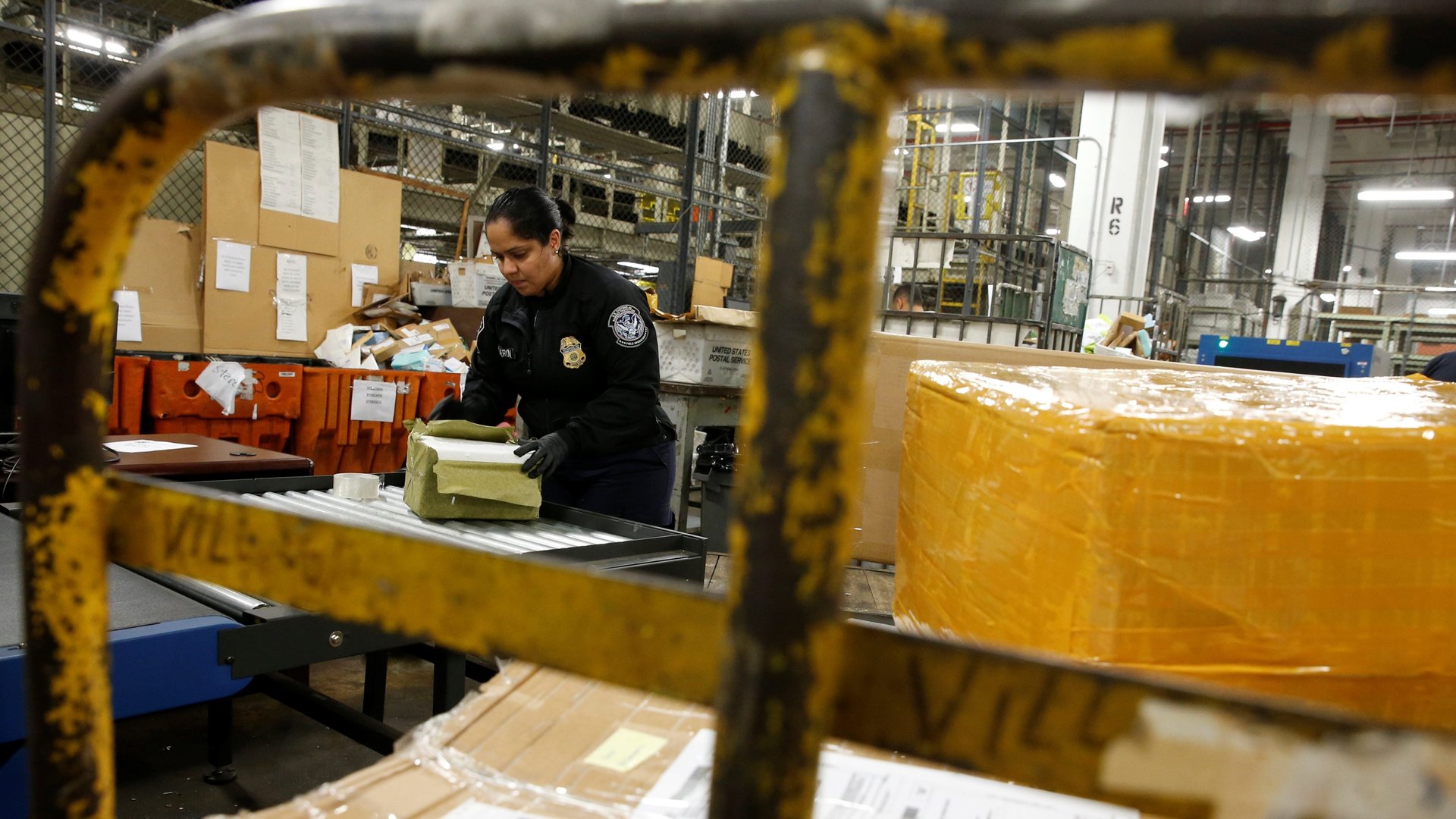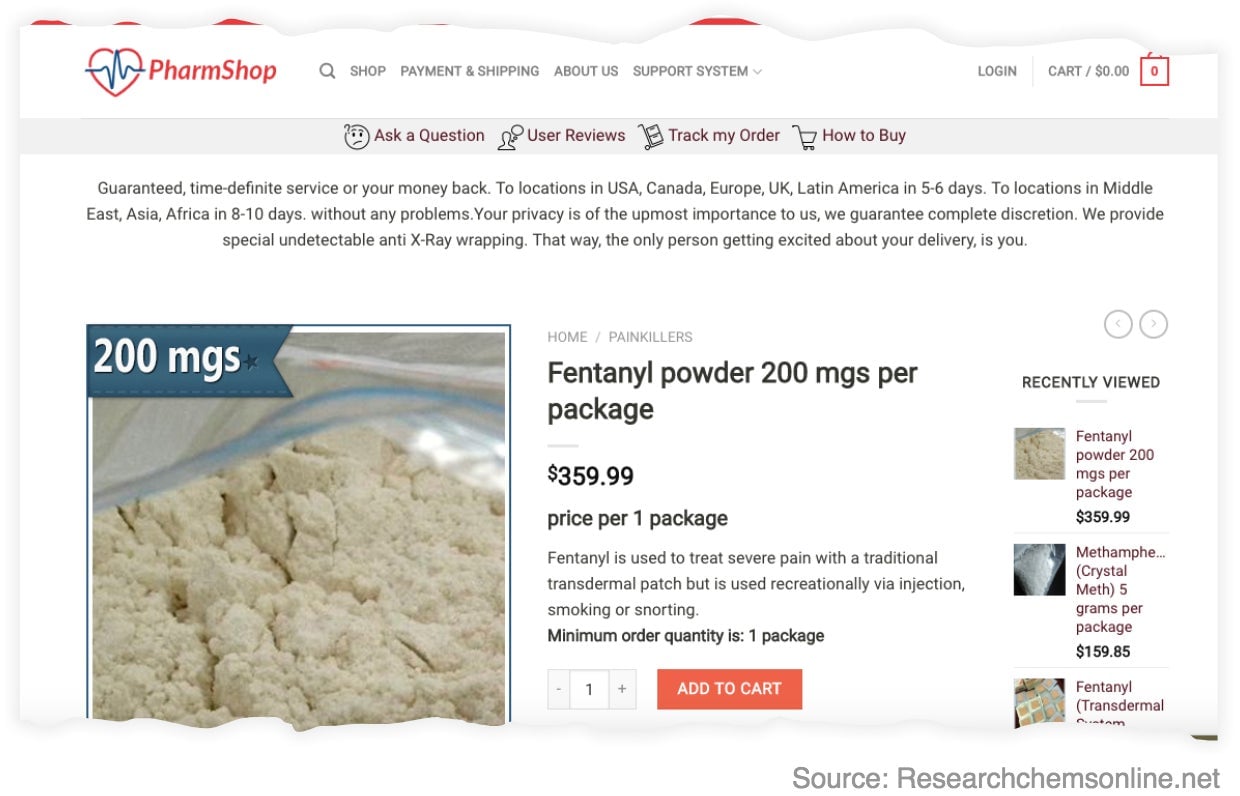Drug traffickers’ favorite way to move fentanyl is FedEx and USPS
A California court charged nearly four dozen people last week for violating US drug and money laundering laws as part of a multi-state methamphetamine distribution ring. The drug traffickers, however, didn’t use any sophisticated techniques to get the drugs over the border. They simply mailed them through FedEx and the US Postal Service.


A California court charged nearly four dozen people last week for violating US drug and money laundering laws as part of a multi-state methamphetamine distribution ring. The drug traffickers, however, didn’t use any sophisticated techniques to get the drugs over the border. They simply mailed them through FedEx and the US Postal Service.
It’s a strategy that over the last few years has become increasingly popular. It has been an especially effective method for bringing into the United States powerful synthetic opioids and the precursor chemicals used to make them.
According to the Drug Enforcement Administration, a kilo of fentanyl that wholesales for about $80,000 can generate roughly $1.6 million on the street, making it approximately 20 times more profitable than heroin. Border officials say the fentanyl seized by officers from international mail and overnight packages is typically more than 90% pure. The purity level of fentanyl seized at land border crossings, by comparison, is generally less than 10% pure. Fentanyl is 50 times stronger than heroin, and because a little goes a long way, shipments of the drug are usually made in small quantities, making them difficult to spot.
“The vast majority of illegal fentanyl is purchased online from labs in China and then shipped to the United States through the mail,” Sen. Rob Portman, an Ohio Republican, said at a 2018 congressional hearing. He described posing as a buyer and asking the sellers how the drugs would be delivered. They told him they often used private express carriers like FedEx, DHL, or UPS, but especially liked the Postal Service “because the chances of the drugs getting seized were so insignificant that delivery was essentially guaranteed.”
The severely overextended US Customs and Border Protection (CBP), the main federal agency tasked with intercepting contraband entering the country, is struggling to keep up with the sheer volume of packages. The agency, in fact, needs to more than double the number of inspectors it has in mail sorting facilities to fulfill its mission, according to congressional testimony by the head of the union that represents CBP officers.
Express shipments have increased by nearly 50%, and international mail shipments have gone up more than 200% over the past five years. Yet at the FedEx hub in Memphis, which processed 86 million shipments last year, there are only 15 CBP officers working in the main overnight “sort” shift, per figures cited by CBP union chief Anthony Reardon, who said the facility would need at least 60 additional CBP officers posted there to “ensure successful interdiction” of these synthetic chemicals.
When it comes to CBP presence, US Postal Service and commercial package facilities are “even more short-staffed than the ports of entry,” Reardon told Quartz.
While there are tools that provide CBP with some advance warning about suspicious shipments coming from target countries, the “sheer logistical nature of trying to pick out which packages contain opioids makes it much more challenging,” an agency official admitted last year. “It’s unlike anything we’ve encountered.”
That CBP finds itself shorthanded at package sorting facilities is not surprising to James Phelps, a criminal justice professor with a special focus on border enforcement. He says CBP suffers from a lack of policy continuity under changing administrations, which means the agency’s focus is always shifting.
“The staffing at UPS and FedEx international facilities is a recent change and it wasn’t planned for by headquarters and political administrations,” Phelps told Quartz. “Sort of an ‘additional duties as assigned’ type of obligation.”
Unlike packages sent via private shippers, searching anything sent through the US mail requires a warrant. The Postal Service, which processes 14 million parcels each day, is also obligated by law to deliver all international parcels. Private companies, meanwhile, are allowed to turn suspicious shipments away.
Finding drugs online through a simple Google search is easy. Picking them out among the tsunami of mail coming into the country is a herculean task.
“Your privacy is of the upmost importance to us, we guarantee complete discretion,” one overseas seller assures prospective customers. “We provide special undetectable anti X-Ray wrapping. That way, the only person getting excited about your delivery, is you.”

Dennis Franks, an ex-FBI agent who supervised a squad that investigated transnational drug cartels, said that stopping the flow of drugs coming through the mail is like “putting your finger in a dike, but there’s just not enough fingers to put in all the holes.”
Further, the organizations trafficking drugs like fentanyl often manage to stay one step ahead of authorities.
“Don’t think for a minute that these cartels don’t have their own ‘intelligence services,’” Franks told Quartz. “Friends, family members working on the inside. So they’re going to know how many agents or officers are assigned to which FedEx facility, when they’re working, and when they’re not.”
However, as Sen. Tom Carper, the ranking member on the Senate Homeland Security and Governmental Affairs Committee, told his colleagues at a hearing last year, enforcement is only one aspect of a much larger issue.
“[I]f we only focus on chasing drug shipments after they’ve entered our mail system, we’ll only address the symptoms of this problem,” said Carper, a Delaware Democrat who served as a US congressman for 18 years before being elected to the Senate in 2001. “We also need to focus on the root causes. To truly do that, we must address our country’s considerable demand for drugs.”
CBP did not respond to a request for comment.
Correction: An earlier version of this article mischaracterized which mail carriers drug traffickers prefer. While they all use private carriers, they said the US Postal Service is the most reliable means of successfully sending drugs into the United States.